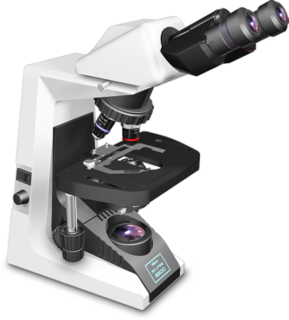Nikon’s Museum of Microscopy
Eclipse E200
( 1999 )
Available since 1999, the Eclipse E200 student microscope is equipped with the CFI optical system, which is a combination of Nikon's CF optical design with infinity optics.

CFI60 optics provide long working distances, high numerical apertures and flat images over the entire field of view with virtually no curvature of field when the field number is 20 millimeters. Advanced dedicated CFI E Plan Achromat objectives were developed for the E200. Also, other higher-grade objectives are available for the Eclipse series.
A unique innovation, the refocusing stage, eliminates the need to refocus the image manually when dropping the stage to exchange specimens or oil a slide. This stage can be instantly dropped by pushing it down, returning to its original position as soon as it is released. An upper limit stopper allows the stage to be set so that the objective doesn't hit the specimen slide, protecting both from damage.
Anti-mold paint plus anti-mold agents sealed at critical places inside the microscope help the E200 resist mold growth in hot and humid work environments. In addition, this model features one-hand operation knobs and handles and an adjustable tilt angle eyepiece tube. Up to two eye-level risers can be mounted to raise the height of the eyepoint - 25 millimeters each for a total of 50 millimeters.
The CFI60 infinity optical systems consist of an objective, a tube lens to focus the light beam, and a pair of eyepieces to enlarge the intermediate image. A parallel optical path exists between the objective and the tube lens. Auxiliary modules, such as an epi-illuminator or a polarization intermediate tube can be placed in this optical path in order to create a flexible modern microscope system without additional relay optics.
Infinity or parallel light beams offer an intrinsic design advantage in that they are relatively insensitive to optical components in the telescopic space between the objective and the tube lens. So long as they are plane parallel, infinity beams are not affected by the thickness of components, such as filters, analyzers, compensators, DIC prisms, and reflectors. The location of the image point remains constant, both axially and laterally, as does the alignment between the objective and the tube lens.















